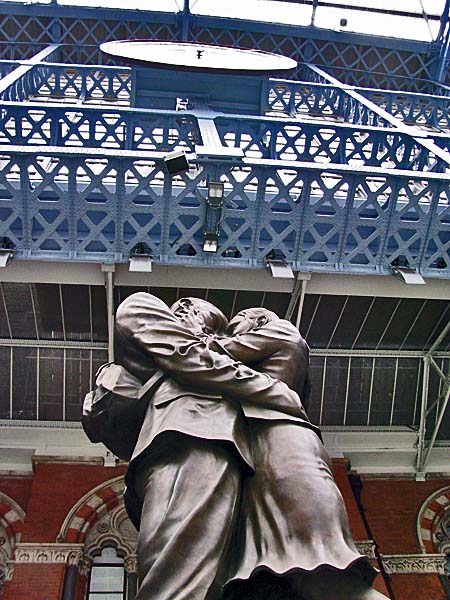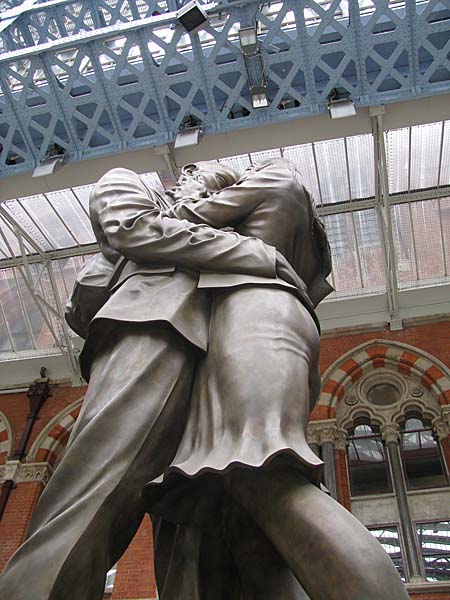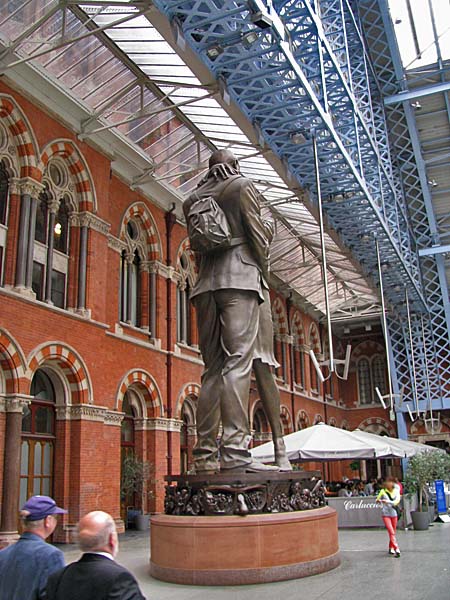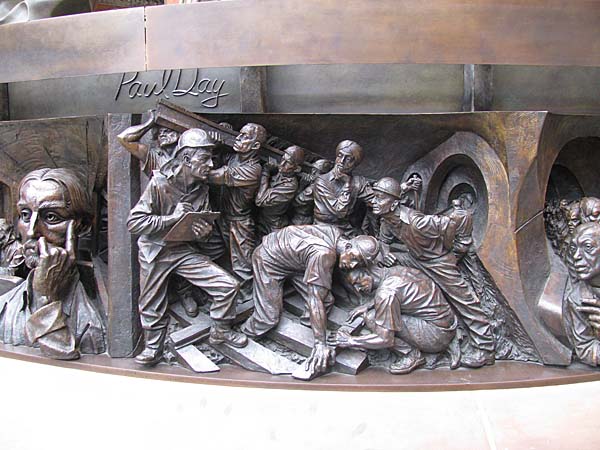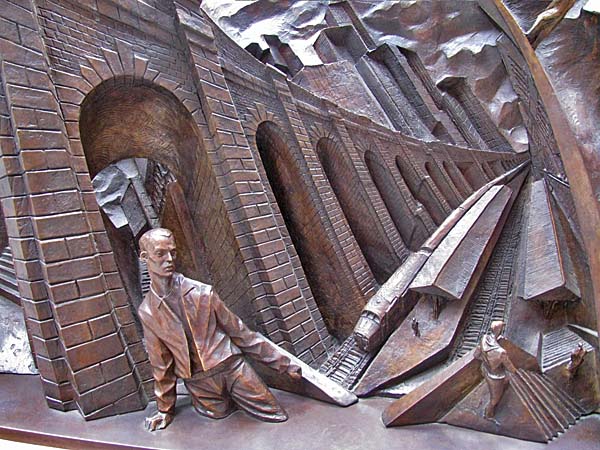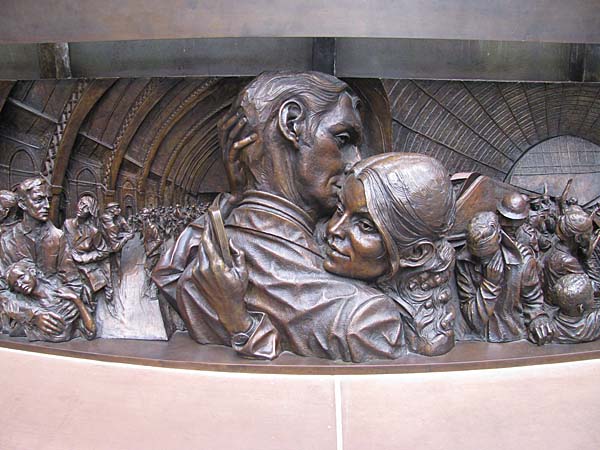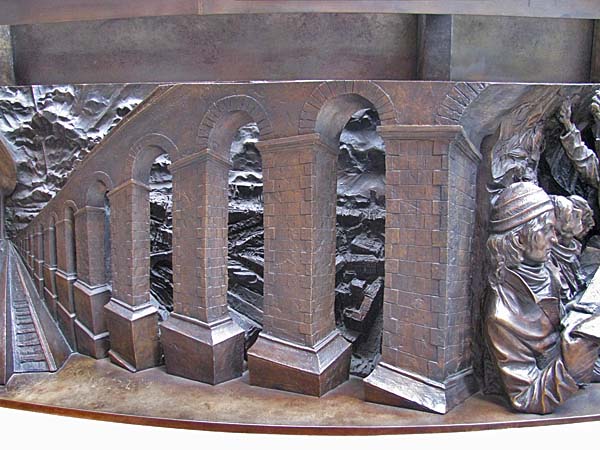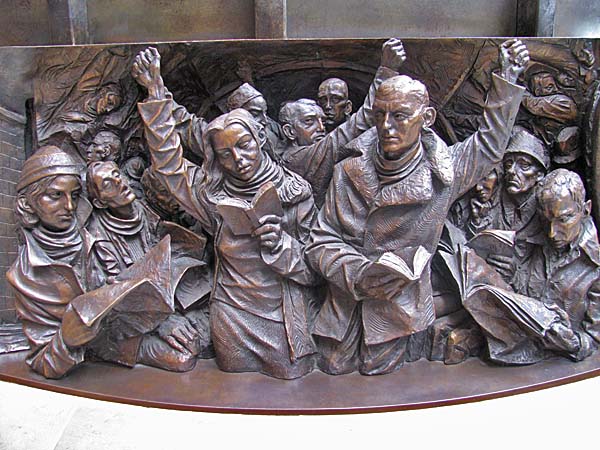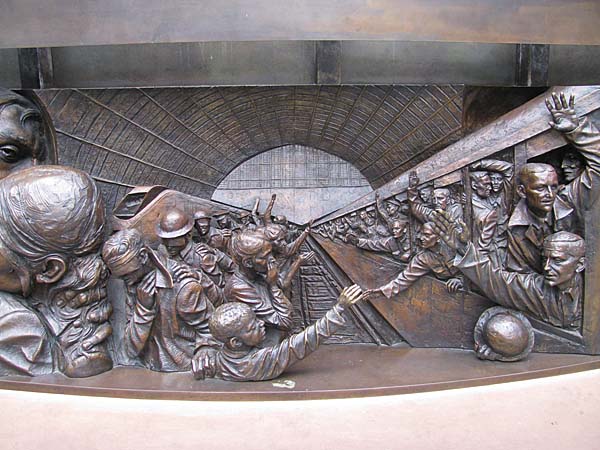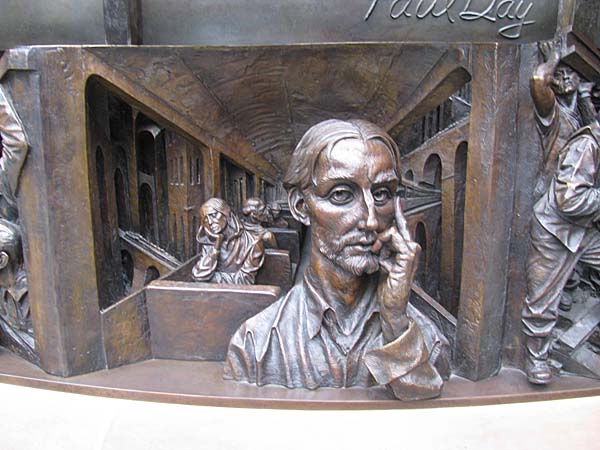| Architect |
William Barlow -
Train Shed - 1863 George Gilbert Scott - St. Pancras Station buildings & hotel - 1876 Rail Link Engineering - Arup, Bechtel, Halcrow, Systra - St. Pancras International - 2008 |
| Location |
Euston
Road, London |
| Description | |
| The
"World Buildings Directory - Online
Database" describes St. Pancras
International as, "
... one of the finest examples of
Victorian architecture and
engineering, being received with great
public acclaim and featuring worldwide
in international media. It has become
a destination in its own right, and
has restored the glamour of rail
travel." Today the
station is made up of the original
Victorian station and hotel and the modern
extension completed in 2008. On the Euston Road stands the magnificent Gothic St. Pancras comprising the hotel and offices designed by George Gilbert Scott and completed in 1876. 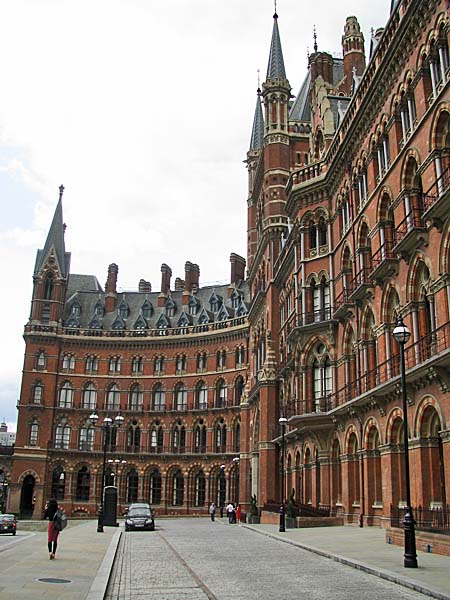 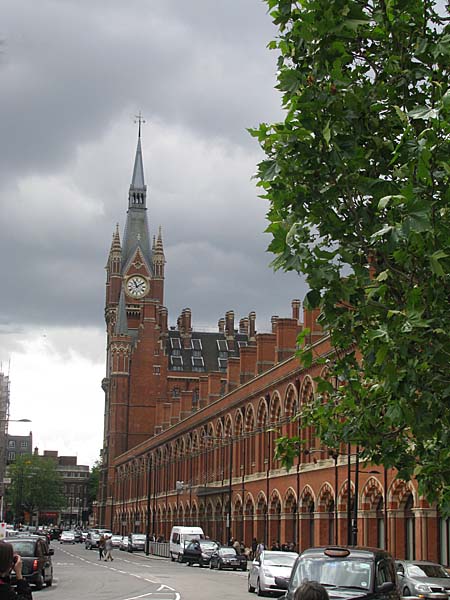 Behind it is the train shed designed by William Barlow that was once the world's largest enclosed space, with a span of 240 feet and a height of 100 feet at its apex.  The hotel, known as the Midland Grand Hotel at the time, closed in 1935 and was converted into railway offices. Threatened with demolition in the 1960s John Betjeman campaigned to save the building and succeeded in getting it a Grade I Listed Status. In recognition of his role in the survival of the station a statue of Betjeman has been erected in the new station. 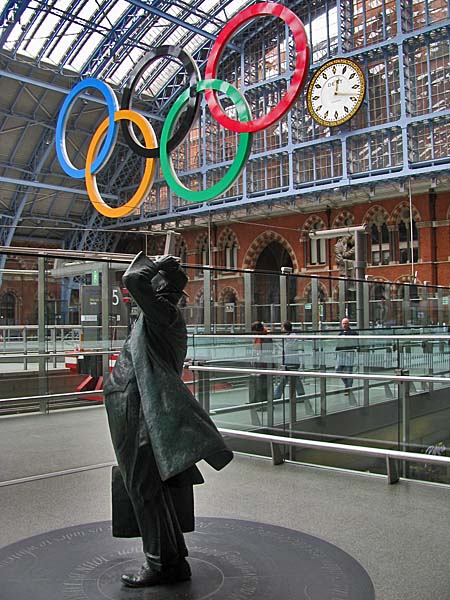 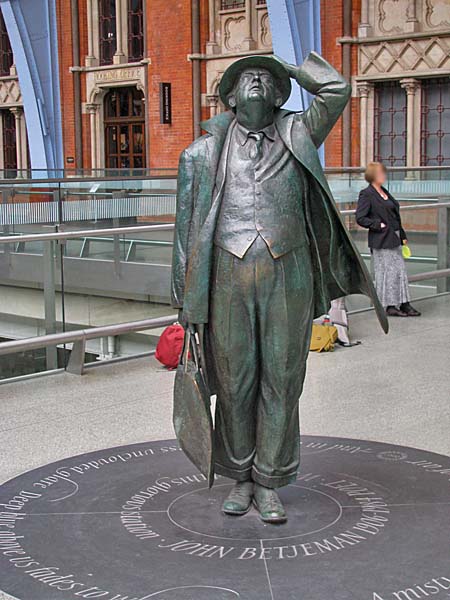 In 2005 planning permission was given for work to begin on restoring the hotel and it reopened as the St. Pancras Renaissance Hotel in the spring of 2011. It was voted the Number One Hotel in the UK in The Sunday Times Magazine’s 2011 Top 100 Hotels in the World. Behind the Victorian building, stands the new extension built to accommodate the terminus for the HS1 high-speed Eurostar rail line. According to the "Engaging Places" website, "The station has a column-free flexible interior with six new platforms (from renovations completed in 2006) that extend beyond the span of the original train shed. The extension joins the old train shed by means of a cross-concourse and is entered at street level. ... a concrete floor has been laid at the upper level of the station to secure the structure, allowing cross-girders to be cut through without destabilising the iron arches overhead ... 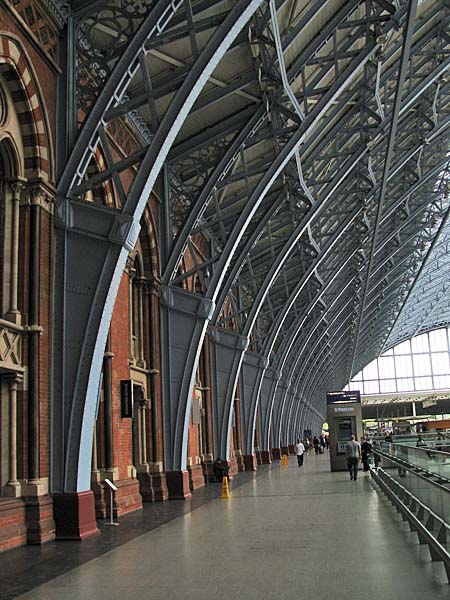  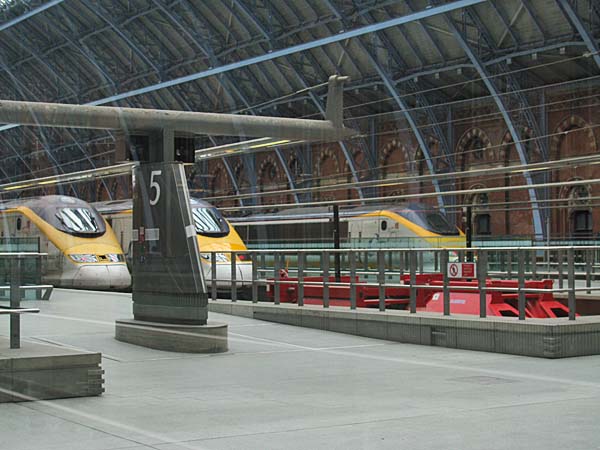  ... Escalators rise through four large slots cut into the platform deck, taking passengers to and from trains." 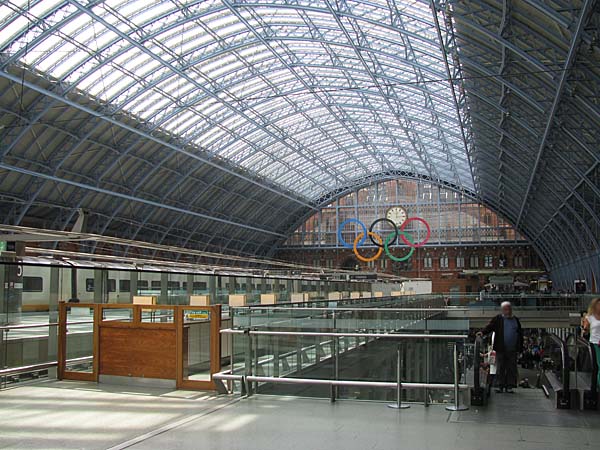 The modern extension features platforms for the Eurostar trains, as well as shops, restaurants and the departure and arrival points for international travelers. 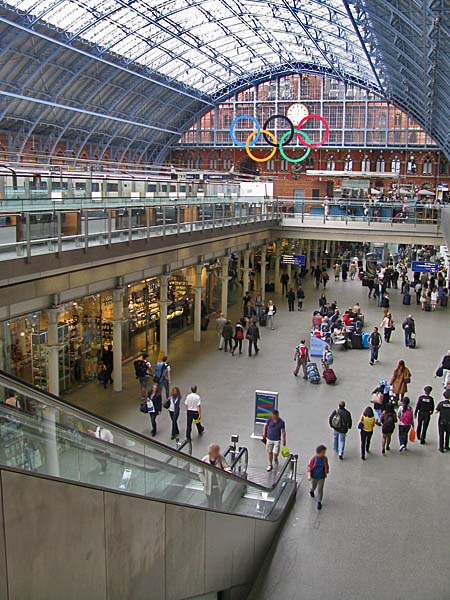 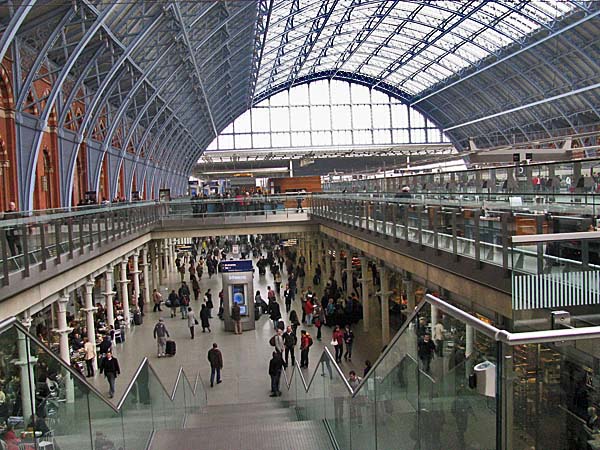 The station clock remains at the south
end of the train shed and beneath it is
a bronze statue of a couple in an
amorous embrace. The statue called
"The Meeting Place" was created by the
British artist Paul Day.
At the base of the
statue is a bronze relief frieze also by
Paul Day.
|
|
|
St.
Pancras International, Euston Road, London
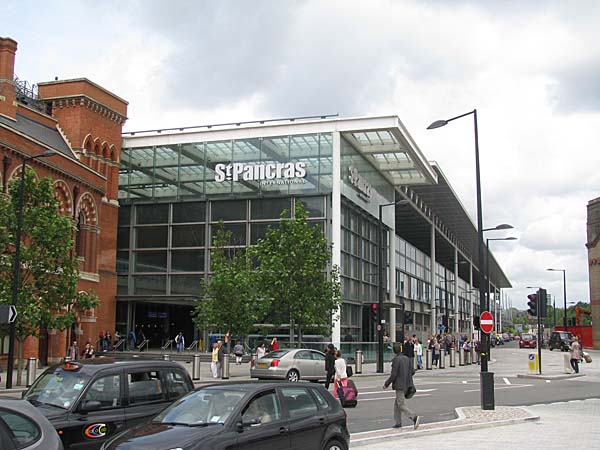 |
